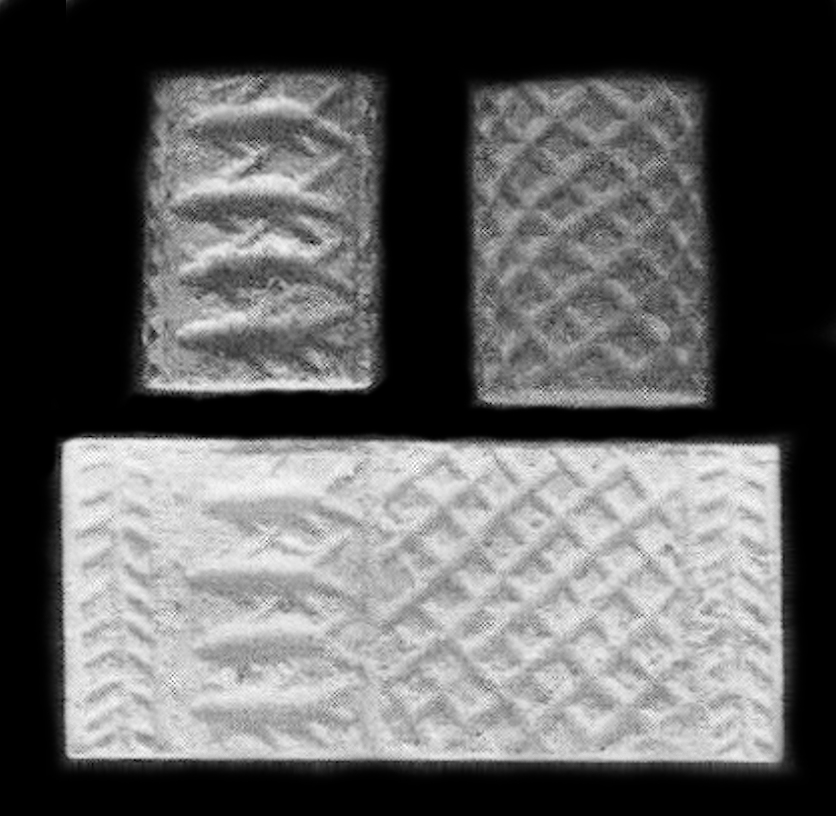|
Riqqeh
Riqqeh (also known as ar-Riqqeh or Riqqa) is a modern village in Egypt. It is located about 80 km south of Cairo. Overview Close to the village, in the desert, was excavated a series of cemeteries. The cemeteries ranging in time from the Gerzeh culture to modern times. Most important are those tombs dating to the Gerzeh (named for the El Gerzeh cemetery) and those of the Middle and New Kingdoms. The cemeteries were excavated and published by Reginald Engelbach in 1912 to 1913. Most of the tombs found were simple shafts, some with one or more chambers at the bottom. Finds include steles, statues and canopic jars. From the Middle Kingdom some well preserved and decorated coffins are preserved. Most remarkable was an undisturbed tomb containing two skeletons and golden jewellery. A closer look at this burial revealed that one of the skeletons belonged to the person buried here, while the other one belonged to a tomb robber, killed when the roof of the tomb chamber collaps ... [...More Info...] [...Related Items...] OR: [Wikipedia] [Google] [Baidu] |
Reginald Engelbach
Reginald Engelbach (9 July 1888 – 26 February 1946) was an English Egyptologist and engineer. He is mainly known for his works in the Egyptian Museum of Cairo, above all the compilation of a register of artifacts belonging of the museum. Biography Initially trained in engineering, in 1908 Engelbach had to discontinue his studies due to a long illness; in 1909-10 he went to convalesce in Egypt where he became fascinated by ancient Egyptian culture. In 1911 he started a collaboration with Sir Flinders Petrie as his assistant, excavating in various places such as Heliopolis, Riqqeh and Harageh. He later excavated in the Near East too. In 1915 he get married and in 1920-21, after World War I, he resumed working with Petrie in his excavation at El-Lahun and Abu Gorab. He subsequently earned a remarkable number of charges and awards and began working at the Cairo Museum. His career, formed on both field and museum, culminated with the creation of the Register of the antiqu ... [...More Info...] [...Related Items...] OR: [Wikipedia] [Google] [Baidu] |
Gerzeh Culture
The Gerzeh culture, also called Naqada II, refers to the archaeological stage at Gerzeh (also Girza or Jirzah), a prehistoric Egyptian cemetery located along the west bank of the Nile. The necropolis is named after el-Girzeh, the nearby contemporary town in Egypt. Gerzeh is situated only several miles due east of the oasis of Faiyum. The Gerzeh culture is a material culture identified by archaeologists. It is the second of three phases of the prehistoric Naqada cultures and so is also known as Naqada II. The Gerzeh culture was preceded by the Amratian culture ("Naqada I") and followed by the Naqada III ("protodynastic" or "Semainian culture"). Historical context Sources differ on dating, some saying use of the culture distinguishes itself from the Amratian and begins circa 3500 BC lasting through circa 3200 BC. Accordingly, some authorities place the onset of the Gerzeh coincident with the Amratian or Badari cultures, i.e. c.3800 BC to 3650 BC even thoug ... [...More Info...] [...Related Items...] OR: [Wikipedia] [Google] [Baidu] |
Governorates Of Egypt
Egypt has a Centralisation, centralised system of local government officially called local administration as it is a branch of the Executive (government), Executive. The country is divided into twenty-seven governorates ( '; ; genitive case#Arabic, genitive case: ; plural: '), the top tier of local administration. A governorate is administered by a governor, who is appointed by the President of Egypt and serves at the president's discretion. Governors have the civilian rank of minister and report directly to the Prime Minister of Egypt, prime minister, who chairs the Board of Governors ''(majlis al-muhafzin)'' and meets with them on a regular basis. The Ministry of Local Development, Minister of Local Development coordinates the governors and their governorate's budgets. Overview Egypt generally has four tiers of local administration units: governorates, cities, counties ''(marakiz)'', districts (subdivisions of cities) and villages (subdivisions of counties). There is a tie ... [...More Info...] [...Related Items...] OR: [Wikipedia] [Google] [Baidu] |

